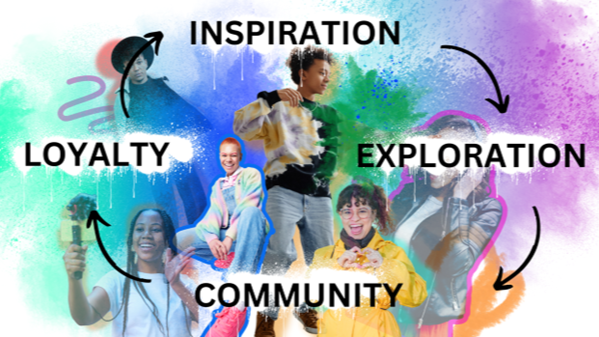Decoding the Multi-Generational Symphony: Unlocking Performance Through Listening and Inclusion

The modern workplace buzzes with the energy of five distinct generations, each with its unique experiences, values, and expectations. Managing this harmonious yet complex orchestra can feel daunting, but the answer lies in a seemingly simple act: listening.
Instead of imposing a uniform approach, true leadership requires tuning in to the individual desire sand challenges of each team member. Forget the 'one size fits all' mentality; embrace the rich tapestry of diverse perspectives woven into your team.
By listening to your people, truly listening (you know what Epictetus said, two ears one mouth - do twice as much listening to talking), be curious, get them talking.
Now it's not very inclusive of me to quote body parts, we are all different, I am trying to make a point about shushing up and listening. At the end of the day, humans want connection and to be valued and respected.
The Generational Chorus:
Let's meet the players on our multi-generational stage:
● The Silent Generation (1928-1945): Loyal, dedicated, and valuing personal responsibility, they seek stability and clear communication.
● Baby Boomers (1946-1964): Competitive, results-oriented, and collaborative, they crave growth opportunities and recognition.
● Generation X (1965-1980): Independent, adaptable, and tech-savvy, they prioritise work-life balance and meaningful contribution.
● Millennials(1981-1996): Digitally native, purpose-driven, and entrepreneurial, they seek flexibility, feedback, and social impact.
● Generation Z (1997-Present): Social justice-oriented, digitally fluent, and collaborative, they value authenticity, transparency, and personalisation.
Understanding these unique characteristics is crucial. By respecting their strengths and addressing their challenges, you unlock the potential of each individual. Encourage cross-generational collaboration, fostering an environment where knowledge, experience, and fresh perspectives converge into powerful solutions.
The Inclusion Imperative:
Diversity goes beyond simply having representatives from different generations. It's about creating an environment where every voice is heard, respected, and valued. A diverse team brings a plethora of benefits:
● Enhanced reputation and brand image: Embracing inclusivity sets you apart as an employer of choice.
● Broadened talent pool: Access a wider range of skills and perspectives.
● Improved customer focus: Understand and cater to diverse customer needs.
● Legal and ethical adherence: Promote equal opportunity and combat discrimination.
● Boosts innovation and creativity: Diverse viewpoints lead to unique and groundbreaking solutions.
Actively foster an inclusive culture through:
● Unconscious bias training: Raise awareness of personal biases and their impact.
● Flexible work arrangements: Cater to individual needs and preferences.
● Open communication channels: Encourage respectful dialogue and feedback.
● Representation in leadership: Showcase inclusivity at all levels.
● Celebrations of diverse cultures and backgrounds: Foster understanding and appreciation.
The Neurodiverse Harmony:
Let's not forget the silent yet significant presence of neurodiversity. ADHD, dyslexia, ASD, and other neurological differences can contribute valuable perspectives and talents, but also come with unique challenges. As a leader, be attuned to the potential needs of neurodiverse team members. Let me give you an insight to me, someone with ADHD:
● Provide clear instructions and expectations. This is important to me. Even though I am a principal in TQ and have a wealth of experience (if I do say so myself 😜), I also come with an ADHD diagnosis and we are all not the same.
● Offer flexible work arrangements and deadlines when possible. For me, this has been invaluable, at TQ we wrap work around life and understand what true flexibility is.
● Create a sensory-friendly environment. That's not easy for all organisations, but if your people aren't great at looking at a camera when on a virtual call, let them have the camera off. We don’t need to go to expensive lengths to support our people.
● Promote understanding and acceptance among team members. For me, this is an emotive subject, I have never felt safer in an organisation (not just with my Manager) to talk about ME.
● Provide access to relevant resources and support. Others in our team are neurodiverse and were wonderful as a support network. I also have a child that has ASD and ADHD, so I am well researched when it comes to these topics. I welcome anyone to reach out to me.
Remember, everyone brings their unique melody to the symphony. By actively listening, embracing diversity, and fostering inclusion, you create a harmonious workplace where every individual can thrive, and your team's collective performance soars.
If you would like to know more about TQ’s Leadership workshops, click here or just reach out!
Additional resources:
● Generational differences in the workplace: https://www.pewresearch.org/short-reads/2023/05/22/how-pew-research-center-will-report-on-generations-moving-forward/
● Neurodiversity in the workplace: https://analysisfunction.civilservice.gov.uk/blog/neurodiversity-in-the-workplace/
● Creating an inclusive workplace: https://www.forbes.com/sites/forbesbooksauthors/2021/11/03/diversity-and-inclusion-in-the-workplace/



